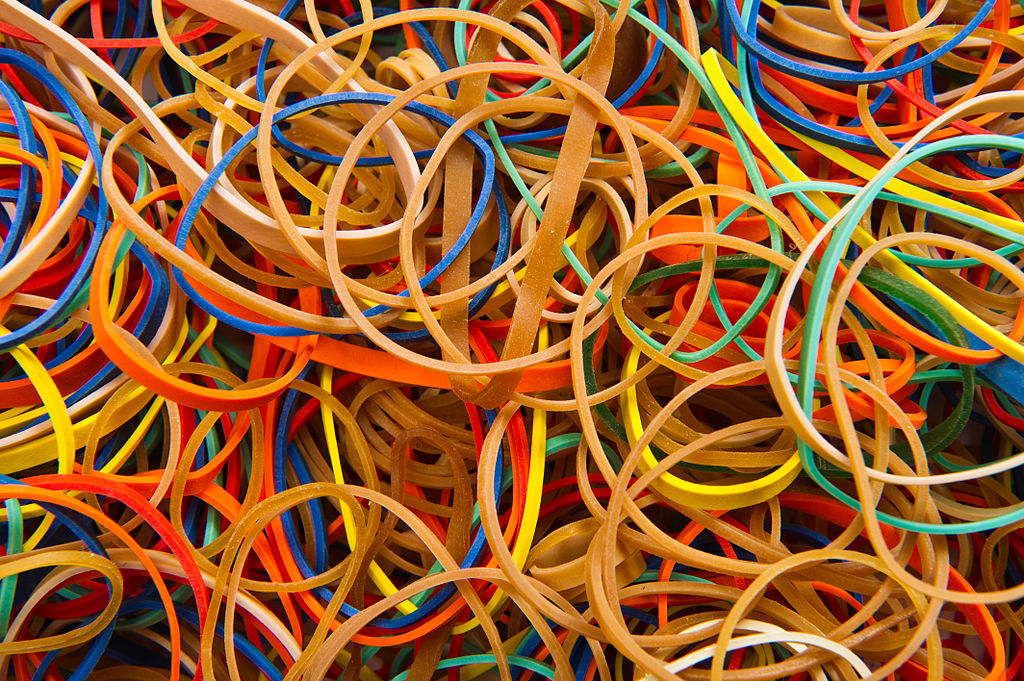Difference Between Rubber and Plastic
Table of Contents
Key Difference – Rubber vs Plastic
Rubber and plastic are both made of polymerized material though there are remarkable differences between their physical and chemical properties. The key difference between Rubber and Plastics is that the Rubber is a polymerized product of isoprene whereas Plastic is made of many synthetic and semi-synthetic organic polymer compounds. Many varieties of products are manufactured using rubber and plastic depending on their characteristic nature.
What is Rubber?
Rubber is a natural product, mainly harvested in the form of latex obtained from the rubber tree, Hevea brasiliensis which is indigenous to South America. However, at present, many varieties of rubber trees are used to harvest latex, and South Asia is considered a main producer. The latex is very sticky and milky and is collected into vessels through a process called ‘tapping’. After this, the collected latex is sent for commercial processing. Here, the rubber is processed into high-grade block rubber or sheet-grade rubber.
Chemically, rubber is made of a polymer of an organic compound called ‘isoprene,’ which is a five-carbon constitute with a very high final molecular weight due to the process of polymerization. Natural rubber is often ‘vulcanized’, where it is heated with sulphur in order to improve resistance and elasticity. This was introduced by Charles Goodyear in 1839. High level of elasticity is a unique property of rubber and among the most common applications of Rubber are; hoses, belts, floorings, dampeners, pencil erasers, tyres, toys, gloves, bands, etc.

What is Plastic?
The word ‘plastic’ is derived from the Greek word ‘plastikos’ which means “capable of being moulded”. Plastics are made of a wide range of synthetic and semi-synthetic polymer material and have been extensively used in industrial manufacturing of products and processes. Generally, plastic is unable to deform without breaking and also impervious to water. Due to their malleable nature, plastics can be easily moulded into various shapes.
Plastics can be divided into groups under different methods of classification. Depending on the chemical structure and the side chains, they can be grouped as acrylics, polyesters, polyurethanes, silicones, and halogenated plastics. They can also be divided into different groups depending on the process of synthesis. Plastics also fall into two main categories according to their tolerance and behaviour under the temperature. The two types are thermoplastics and thermosetting polymers. When thermoplastics are heated, they undergo a chemical change and can be moulded over and over again while thermosets melt and take shape irreversibly. The first plastic which was based on a complete synthetic polymer was Bakelite. To-date, most plastics are produced from petrochemicals. However, due to rising environmental concerns, renewable plant materials such as cellulose and starch are used to produce bioplastics. Plastics have been able to replace many other materials namely; wood, stone, leather, glass, metal, etc.

What are the Differences Between Rubber and Plastic?
Definition of Rubber and Plastic
Rubber: Rubber is a polymerized product of isoprene
Plastic: Plastics are made of many synthetic and semi-synthetic organic polymer compounds.
Characteristics of Rubber and Plastic
Properties
Rubber: Rubber is a substance which is highly elastic and can be made harder and more resistant via vulcanization.
Plastic: Plastic is a material which can be moulded into different shapes due to their malleable nature and are hard and water resistant.
Nature
Rubber: Even though synthetic rubber exists, most of the rubber used today has a natural origin
Plastics: Plastics are mainly derived from petrochemicals and has a synthetic nature.
Image Courtesy: “Plastic beads1”. Licensed under (CC BY 2.5) via Wikimedia Commons “Rubber bands – Colors – Studio photo 2011” by Bill Ebbesen – Own work (CC BY-SA 3.0) via Wikimedia CommonsncG1vNJzZmivp6x7pbXFn5yrnZ6YsqOx07CcnqZemLyue8OinZ%2Bdopq7pLGMm5ytr5Wau26%2B1JuZnqpdlruledWsZKmkkajBqq%2BO